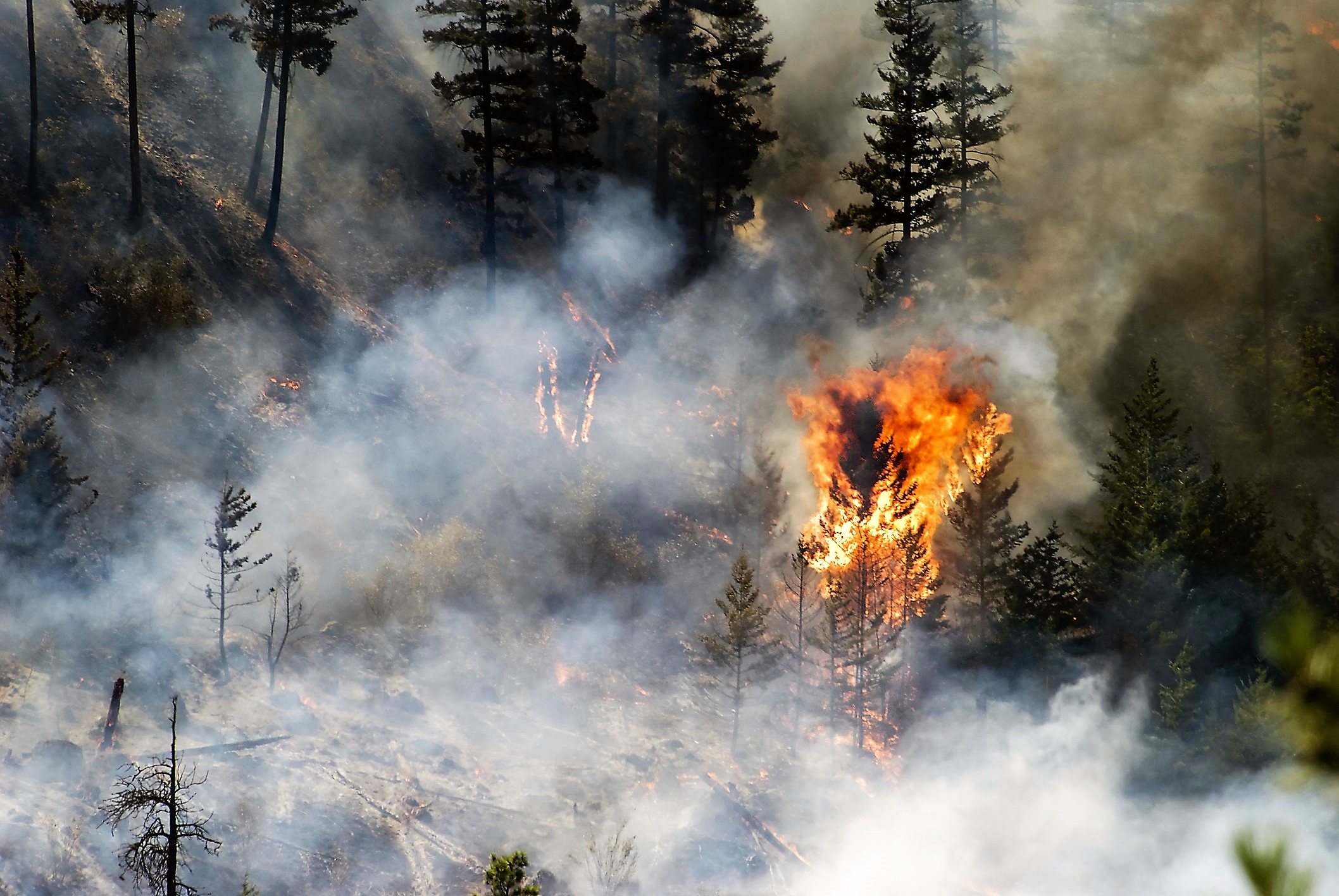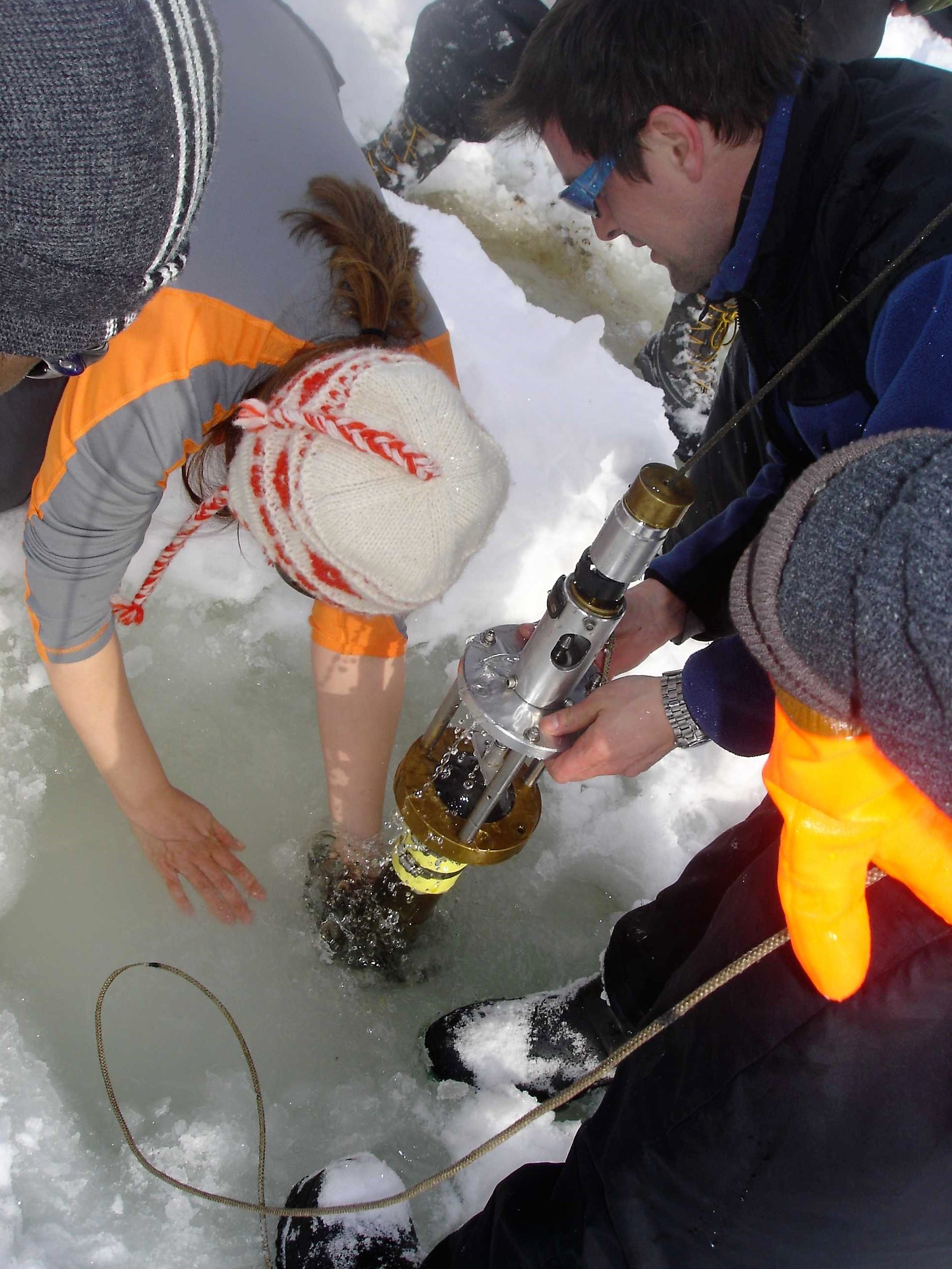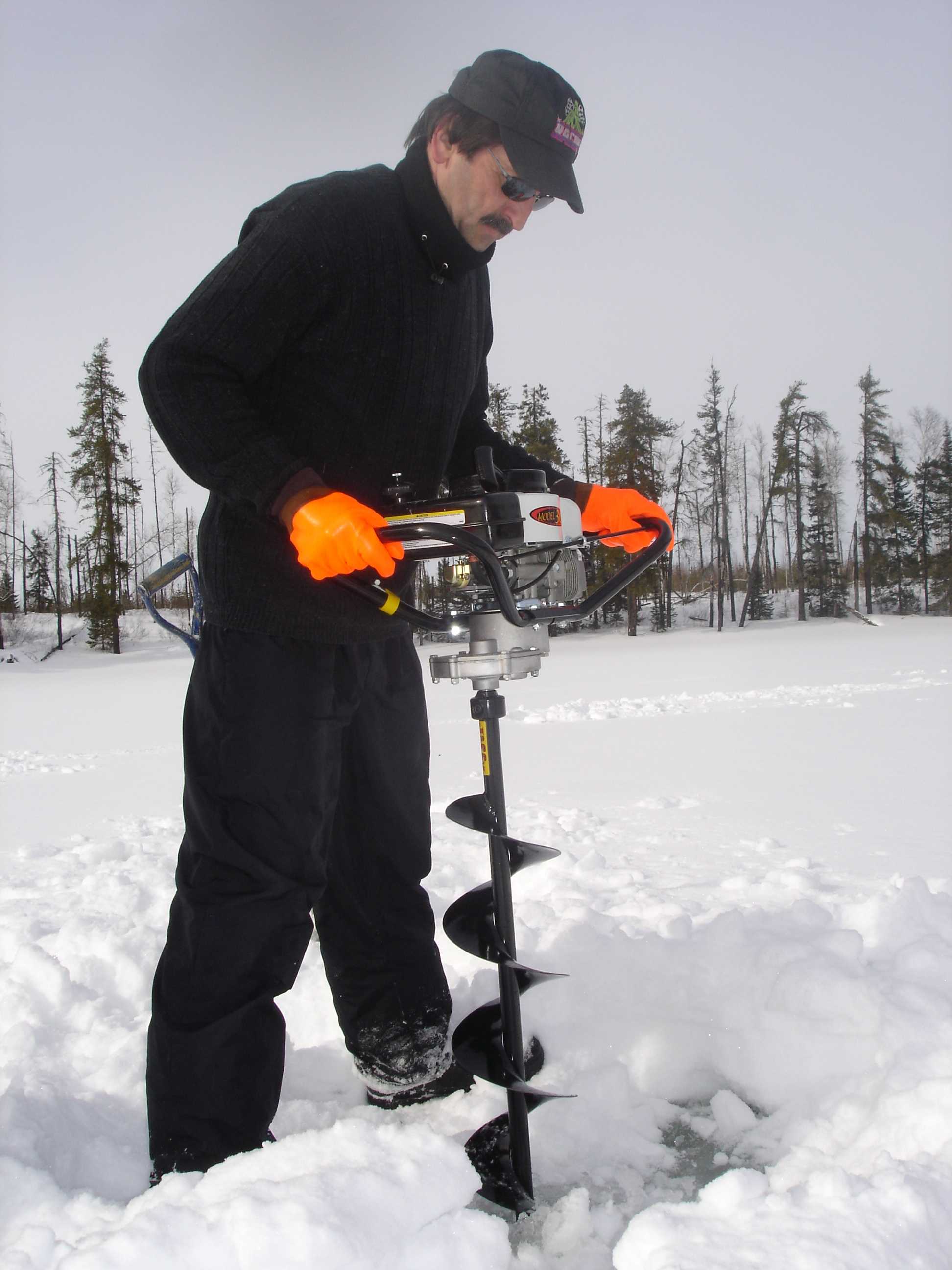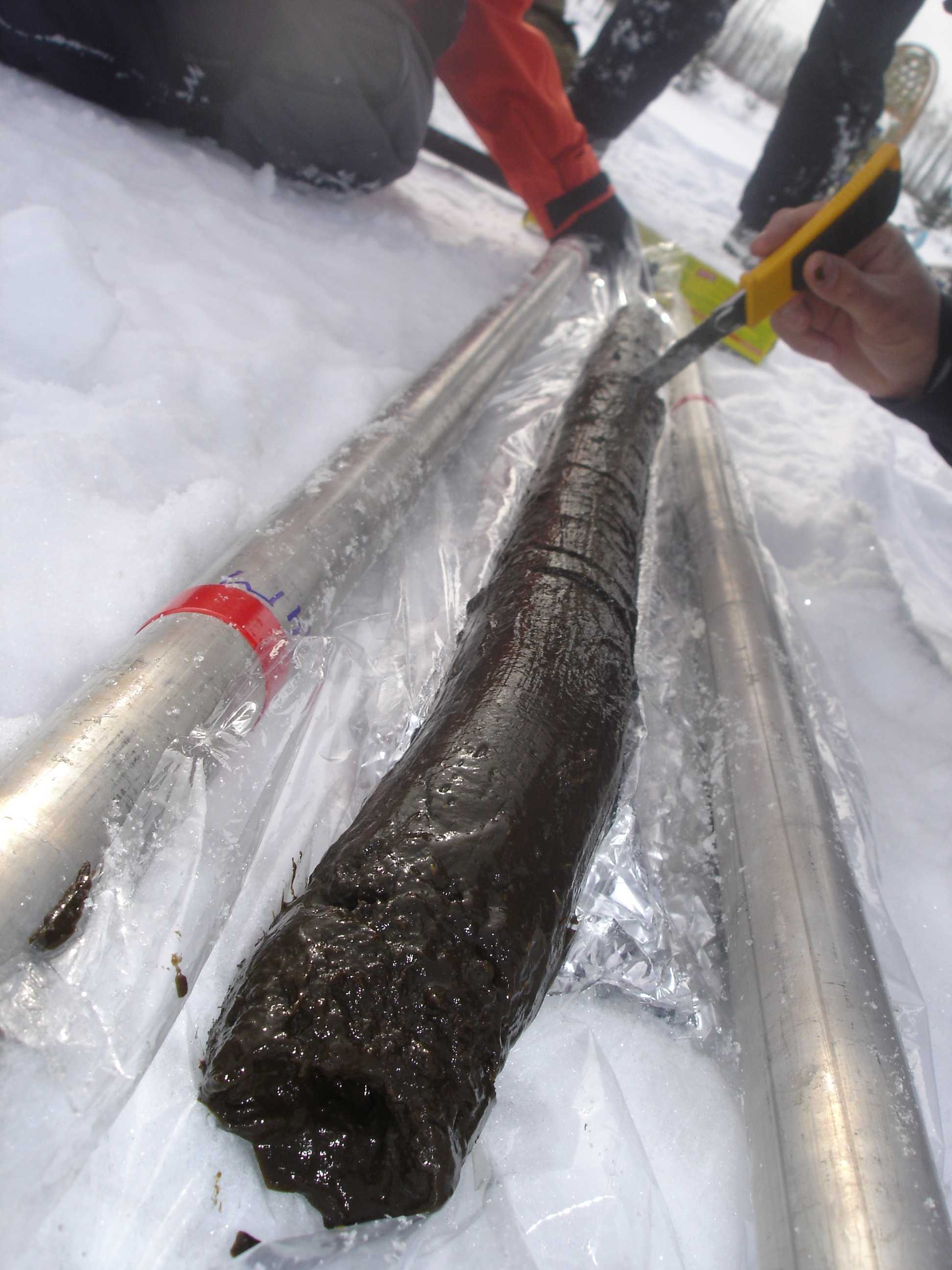A glimpse into the future of the boreal forest: less frequent but more aggressive fires
By Nathalie Chaperon, Senior Communications Officer, Natural Resources Canada
The boreal forest of North America developed after the last ice age about 10,000 years ago. We might expect that climate change and human occupation of the territory would put the boreal forest at greater risk of fire. But a recent scientific study involving Martin Girardin, a research scientist from the Laurentian Forestry Centre at the Canadian Forest Service, has found the opposite.

While climate change and human behaviour may spark wildfires in some parts of Canada's boreal forest, NRCan-CFS researcher Martin Girardin's work focuses on an area in Manitoba that is tracking lower than historic levels.

NrCan-CFS researcher Martin Girardin
“We studied the Whiteshell region, which straddles Ontario and Manitoba and is representative of the boreal forest of North America,” Girardin explains. “Despite rapid changes in the climate and substantial human occupation of the territory, we observed a reduction in the amount of wood burned in the past 2,500 years.”
The slowdown in fires was briefly interrupted in the mid-19th century, which was marked by a sharp increase in fire activity. Around the 1930s, the amount of burned biomass once again started on a gradual downward trend, and the decline has accentuated since then, according to the study, which was recently published in the scientific journal Ecosphere.
“The level of disturbance by fire today is lower than the historical level, despite accentuated global warming,” says Girardin.
Why are fires less frequent?
Several factors have contributed to the reduction in forest fires, including the use of more effective methods to fight forest fires, the adaptation of forest management principles for burned areas and changes in flora regrowth following a fire.
What are the consequences?
Fewer forest fires result in aging trees, and they ultimately contribute to the emergence of large fires. Older and more fragile trees produce higher quantities of debris, which accumulates on the ground and effectively becomes fuel for major fires. The aging of the forest landscape also leads to a loss of biodiversity, especially in fire-adapted species.



To help reconstruct wildfire history, Martin and his team extract coal sediments from nearby lakes dating back 2,500 years. Courtesy: Adam Ali, Montpellier II University.
How can we prevent major fires?
“One of the keys to maintaining forest resilience in the boreal system is to keep forests diverse in their composition and ensure appropriate age-class distribution,” says Girardin. “Since hardwood stands are less flammable than softwood stands, they could be planted strategically to act as barriers along with pre-existing fire stops (roads, lakes and rivers) and decrease a landscape’s vulnerability to fire. Controlled burns, which are fires set intentionally for specific purposes, can also be used to change fuel structure and composition.”
Overview of the study
In order to reconstruct the forest fire history over such a long period, the researchers used three methods: they searched archives (1920–2010), studied tree rings (dendrochronology, 1690–2010) and analyzed lake sedimentary charcoal records for the last 2,500 years.
Learn more: Simply Science Natural Elements podcast, Researching Forest Fires
Text Version
Anne-Sophie Alarie (Host): Managing forest fires — it’s all about balancing the good and the bad.
Wildland fires are a natural part of the forest ecosystem. They play an important role in maintaining the health and diversity of our forests.
But they can also threaten public safety, seriously impact communities and destroy vast amounts of timber resources.
Our experts at Natural Resources Canada are working to better understand forest fires and to help authorities predict and manage both their risks and benefits.
Find out more on today’s episode of Natural Elements.
Music intro
This is Natural Elements, and I’m your host, Anne-Sophie Alarie.
Natural Elements is a podcast series brought to you by Simply Science, which is Natural Resources Canada’s online magazine. Like our sister podcast Ask NRCan, we talk to our experts about the work they do and how it relates to what’s happening around us. While Ask NRCan features in-depth discussions, Natural Elements offers you a quick overview, giving you a taste of the topic and letting you know where you can find more information.
Let’s turn to today’s topic: forest fire management.
Here’s Richard Carr from Natural Resources Canada’s Canadian Forest Service to give us some background information:
Richard Carr: Forest fires are part of the natural landscape in Canada. They help to reduce undergrowth in forests. They bring up new growth. Help regenerate certain types of species. Provide habitat for wildlife. So in fact some of the pine trees depend on forest fires to burst open their cones to start new growth, so they're very important part of our forest ecosystem. They can become a problem though of course when they threaten human development, you know either houses businesses or other types of infrastructure. So in Canada we average somewhere around let's say around seven thousand fires per year. And so those burn about two and a half million hectares every year on average. They generally consider that to be about half the size of Nova Scotia. And the numbers do fluctuate a lot between seasons. You can go from a really quiet area one year to a very busy one the next.
Anne-Sophie: Certain areas of the country are more vulnerable then others.
Richard: Our country is generally a little bit more susceptible to forest fires in the western part. It tends to have a dryer climate. So when fires are a bit more frequent there is a little chunk of the boreal forest that stretches from north western Ontario up through the northern prairie provinces into the territories. It's the area that has most large fires on average.
Anne-Sophie: Forest fires typically occur at specific times during the year.
Richard: Forest fire seasons generally happen in two modes. We tend to have a spring fire season where grass is not being dumped yet and rather these trees don't have the leaves on that. So we do have a sometimes fairly dry conditions in the spring, it can be windy and without the green vegetation things burn a little bit more easily. We tend to have a little bit of a spring fire bump. Sometimes it calms down for a bit through late May and June when things green up. But the climate rather generally dries out through the summer so we tend to have an increase in fire activity in the summer as well. And that's partly due to the drying up of the forest again but that also coincides with the height of the lightning season. So we as we tend to get a lot of ignitions through the summer from lightning strikes.
Anne-Sophie: Natural Resources Canada has been involved in fire research for decades.
Richard: We look at things like fire and environment. You know that's just what leads to fires and how they burn. What types of fuels are available. Topographic influences. Improving nationwide fuels mapping programs. Every year we look at the ecology, what happens when fires burn. How do plants regenerate and what happens to animals. How some benefit from it for sure. So that type of research going on. Just looking at the conditions that lead to forest fires, the threat conditions as well. And then the forest fire research group, you got people that do fire growth modeling, got people researching ways to predict both human starts and lightning starts. And you get a subset in northern here, the Wildland Fire Information Systems group that takes all that research and puts them more or less real time real world product. So they got their flagship is a Canadian Wildland Fire Information System where a lot of the results of this research can be displayed.
Anne-Sophie: Our experts also provide monthly and seasonal forecast maps of fire weather severity.
Richard: Seasonal forecasts are first based on the drying up to the fourth floor as we head into spring. So we look at last fall's drought level, we use the winter precipitation and estimates of snow melt to determine the drought levels when we start the fire weather index calculations in the spring. Now having established starting conditions, we'll take environment can kind of change candidates climate model output temperature and precipitation and we'll calculate daily fire weather index values from that. From those forecast models. And from that we can compare the predicted anomalies in temperature and precipitation with the historical level. So what do you come up with is called a fire severity index.
Anne-Sophie: Richards provides us with an overview of the forecast for the 2019 season.
Richard: It's been very mixed up year in the north, a fairly mild winter and then a very cold February. Light snow melt in parts of the country. At the same time some record warmth in mid-March that melted snow off quite early in Yukon and possibly Western northwest territories, even British Columbia. So very mixed up year. The fire levels so far have been quiet. Some provinces and territories have a more than average number of fires. But the area burn is quite low still. Part of the country in May predicted above normal fire activity in June though, we're seeing the dry country in British Columbia and the Yukon maybe more of a risk area for fires and trying to carry through July and August as well. So B.C. Yukon and possibly Western Alberta. The rest of the country from this point of view is just showing normal levels of fire activity expected.
Anne-Sophie: There are many available resources online for people looking for forest fire information in their area, including the Canadian Wildland Fire Information System.
Richard: People can Google CWFIS, that shows nationwide fire occurrence, fire danger, fire behaviour conditions that include effective topography and different types of fields that some vegetation that is available to burn. We have our seasonal forecast on there. All the provinces have a fire management website of some sort. So I encourage people to look up their provincial wildland fire web site to be familiar with it, be familiar with any caller numbers that they can use to report forest fires. You always encourage people to be careful because small fires or fires in fairly quiet seasons can still have some fairly serious consequences.
Anne-Sophie: If you live in an area that’s susceptible to forest fires, or if you’re interested in learning more about them, check out the links in the episode description.
Canadian Wildland Fire Information System
Forest Fires – Natural Resources Canada
If you don’t want to miss future episodes of Natural Elements or its sister podcast AskNRCan, subscribe to the Simply Science podcast channel.
If you want to learn more about the fascinating scientific work that we do at Natural Resources Canada, check out our Simply Science website for in-depth articles and also our Simply Science YouTube channel to see our experts at work. You can find the links in the episode description as well.
Thank you, everyone, for listening! We’ll see you next month with a brand new episode.
Page details
- Date modified:


